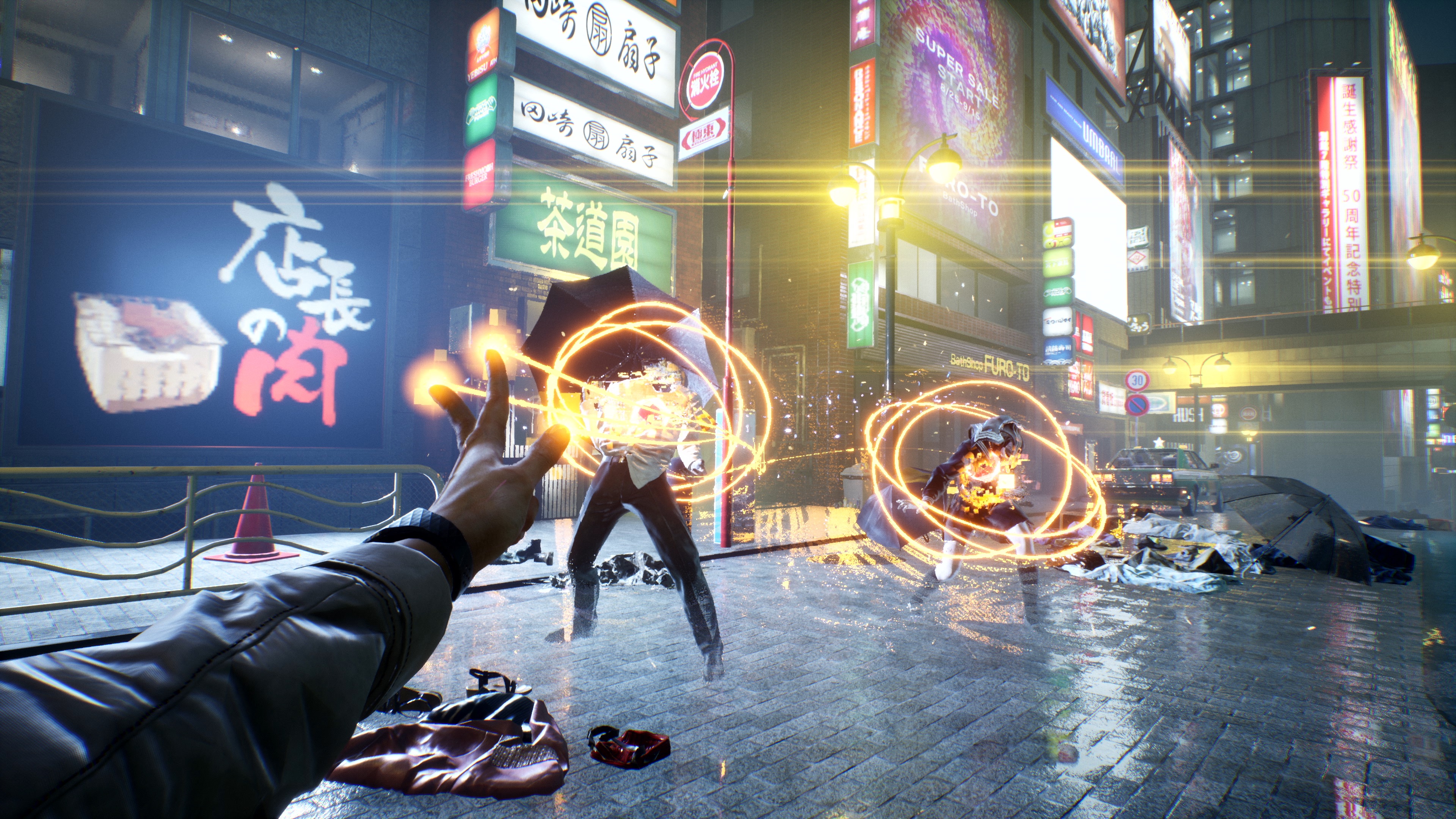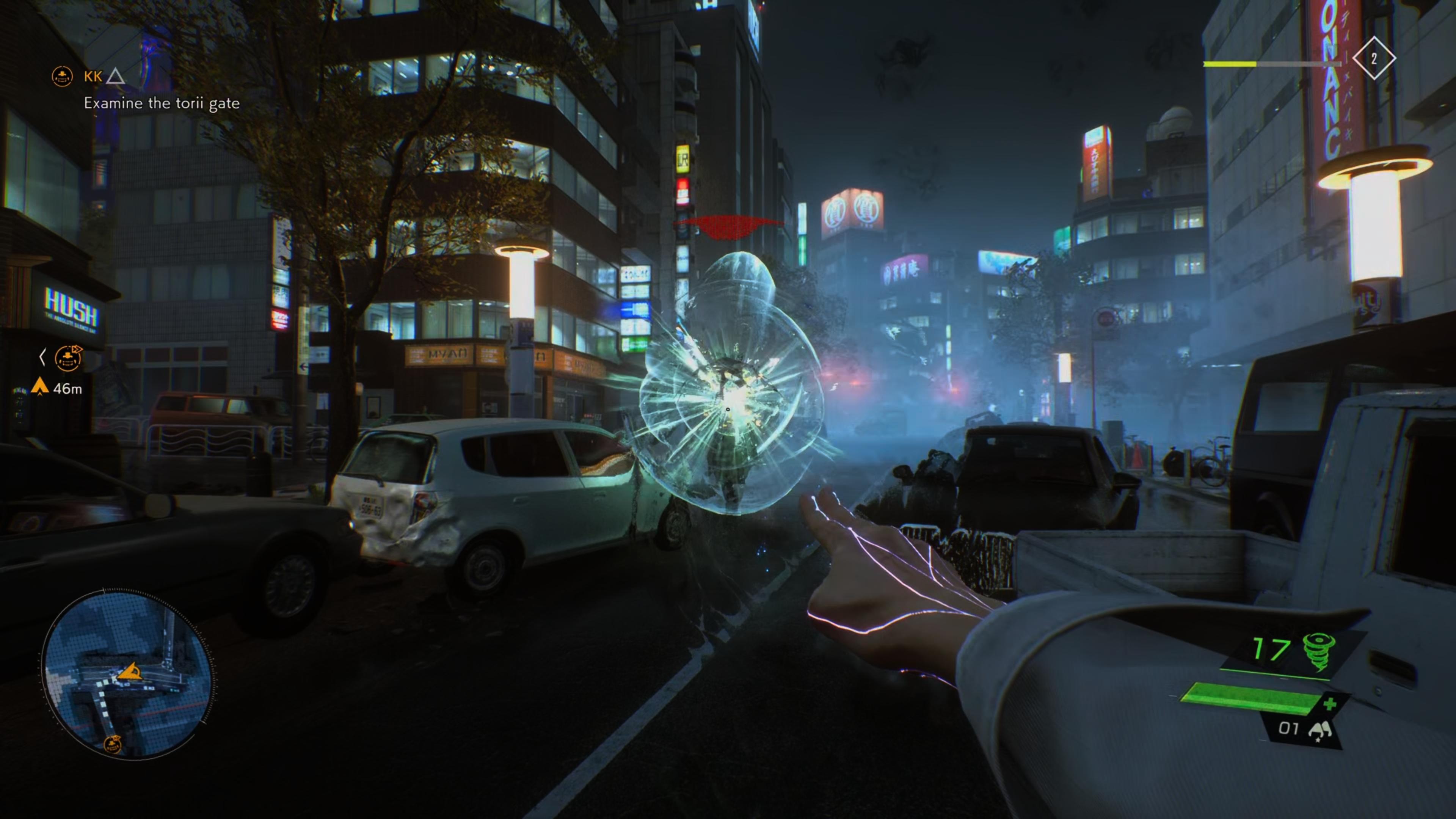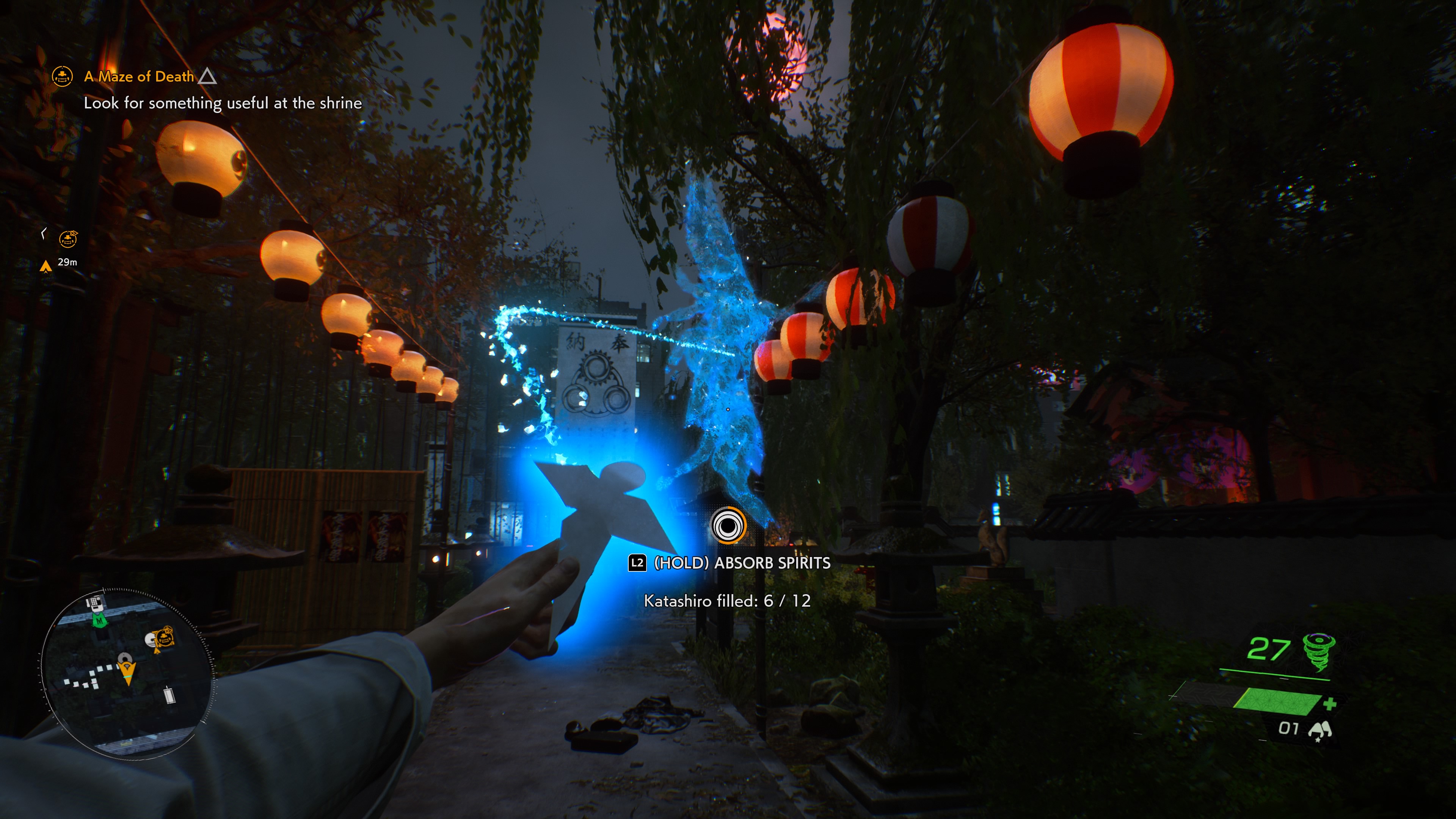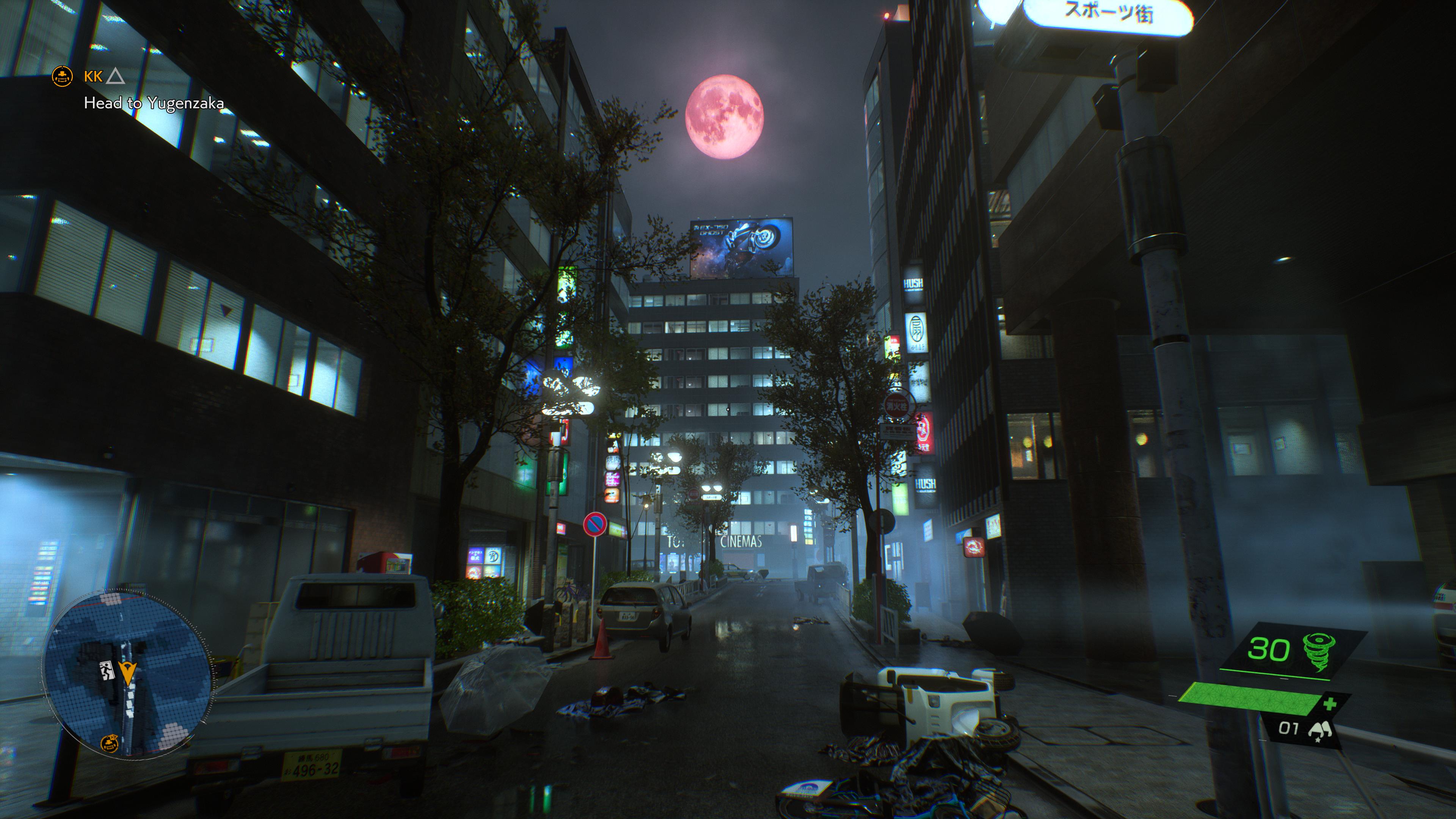Ghostwire: Tokyo hands-on preview: Another must-play PS5 exclusive
Ghostwire: Tokyo offers a fun but familiar package

In a strange way, Ghostwire: Tokyo feels like the end of an era. Developed by Tango Gameworks and published by Bethesda, in the wake of Microsoft’s $7.5 billion purchase of Zenimax in 2020, there is a possibility that this will be the last Bethesda game to grace the PlayStation platform.
In an even stranger twist, Ghostwire: Tokyo is actually launching exclusively on the PS5, due to a deal inked before Microsoft’s acquisition of Bethesda’s parent company. Head of Xbox, Phil Spencer, has been pretty coy about the future of the publisher's games on PlayStation, but we do know that Bethesda's next flagship RPG, Starfield, will be an Xbox console exclusive.
If Ghostwire: Tokyo is to be Bethesda's PlayStation swansong, the publisher appears to be going out on a high. Tom’s Guide has received early access to Ghostwire: Tokyo, and while we can’t share our full thoughts yet, we can give our initial impressions after around four hours of playtime.
Based on the game’s first two chapters, Ghostwire: Tokyo is shaping up to be the next must-play PS5 exclusive. It definitely falls into some familiar open-world grooves. But its varied arsenal of paranormal powers, and a well-realized depiction of Tokyo, make for a compelling concoction that has us itching to play more.
A paranormal playground

Ghostwire: Tokyo is a radical departure from Tango Gameworks’ two previous survival/horror games, The Evil Within and its sequel. For starters, the camera perspective has shifted from third- to first-person. And while Ghostwire: Tokyo is certainly atmospheric, it’s not a horror game.
Instead of wielding guns or sharp melee weapons, your arsenal in Ghostwire: Tokyo consists of elemental spells. With a single button press, you can shoot wind, fire, ice and more from your fingertips. The game’s combat system has a “karate meets magic” feel, and even after several hours of casting spells with a flick of your character’s wrist, it still feels highly satisfying.
The enemies you face are sinister invading spirits known as Visitors. Once softened up, enemies enter a downed state, and you can finish them with a takedown move that involves ripping their core out in a shower of sparks. However, this is easier said than done. Enemies are aggressive and can easily overwhelm you in numbers.
Get instant access to breaking news, the hottest reviews, great deals and helpful tips.
Instead of going all spells-blazing, you also have the option of stealth. Thinning groups of enemies with a few silent takedowns first is a wise move, as your paranormal abilities require a resource that isn’t always available in abundance. However, I found myself being sneaky more out of necessity than enjoyment, as the stealth mechanics are underwhelming, and the enemy detection AI is easy to exploit.
After a linear first chapter, which sets up the game’s core premise and main players, you drop into an open-world Tokyo and have free reign to explore. The central location of Tokyo appears to be the game’s biggest strength. I spent a surprisingly sizable chunk of my four hours with the game just wandering the streets and enjoying the sights.

This eerie depiction of the Japanese capital is crammed full of points of interest and collectables. But there’s also a lot of the standard open-world fluff that you’ve probably done in plenty of other games, from corrupt zones filled with optional enemy encounters, to shrine gates that defog the map and act as fast travel points. Moments after unlocking my map, it was already overflowing with dozens of icons.
There are also plenty of side quests to undertake in-between story missions. Lost souls with unfinished business will regularly ask for your help in return for XP and valuable currency. The most mundane of these jobs entail merely fighting a group of enemies, but some side quests cast you as a paranormal investigator and involve some highly-enjoyable detective work.
From what I’ve played so far, Ghostwire: Tokyo does a fantastic job of balancing cinematic moments and consistently engaging combat with a visually impressive open world that begs to be explored. There’s an awful lot to like about that mixture. But if there’s one area that doesn't quite measure up yet, it's the story.
Where did everyone go?

Ghostwire: Tokyo wastes no time throwing you straight into the thick of things. The opening cutscene sets the stage at a breakneck pace. The citizens of Tokyo have mysteriously vanished. The city is being overrun with sinister spirits, and blanketed in a thick — not to mention deadly — fog.
You play as Akito, a man possessed by the spirit of a former police officer known as KK. Together, you set out on a journey to unravel the truth behind these strange events, and also to stop a group wearing Hannya masks, who seem to be connected to proceedings.
The game quickly adds some personal stakes for Akito, as his sister is also wrapped up in the mystery. There may also be more to KK’s backstory than he lets on. Frustratingly, in its first two chapters Ghostwire is practically obsessed with setting up new mysteries, to the point of slowing down the story’s pacing with endless cryptic teasing.
Akito and KK instantly form a sort of buddy-cop duo, but their interplay is fairly forced, and the former seems oddly unphased by his home getting overrun with literal ghosts. At least the game has a pleasing comedy streak that will keep you engaged. For example, the item shops dotted around the city are manned by levitating cats that spout puns.
Of course, two chapters is not a large enough sample size to definitively judge a game’s story, and there could be some engaging wrinkles just around the corner. However, based on what I’ve played so far, Ghostwire: Tokyo is definitely more gripping from a gameplay perspective than a narrative one.
We’ll be able to give our final Ghostwire: Tokyo verdict soon, but so far it seems set to continue the PS5’s impressive streak of must-play exclusives in 2022. Let’s just hope the narrative pacing picks up, pronto.

Rory is a Senior Entertainment Editor at Tom’s Guide based in the UK. He covers a wide range of topics but with a particular focus on gaming and streaming. When he’s not reviewing the latest games, searching for hidden gems on Netflix, or writing hot takes on new gaming hardware, TV shows and movies, he can be found attending music festivals and getting far too emotionally invested in his favorite football team.
 Club Benefits
Club Benefits





